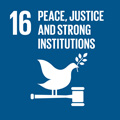- Docente: Ira Torresi
- Credits: 5
- Language: English
- Moduli: Ira Torresi (Modulo 1) Irene Frosi (Modulo 2)
- Teaching Mode: In-person learning (entirely or partially) (Modulo 1); In-person learning (entirely or partially) (Modulo 2)
- Campus: Forli
- Corso: First cycle degree programme (L) in Intercultural and Linguistic Mediation (cod. 8059)
Learning outcomes
Students are given the necessary strategies, techniques and tools to perform liaison/dialogue interpreting. They are required to understand and comply with professional ethics and standards of practice and are expected to be able to perform interpreting in bilingual and intercultural settings.
Course contents
This 40-hour module takes place during the second semester, and it is part of the English Language and Dialogue Interpreting III course (English as a first foreign language). It is aimed at further developing skills, strategies and techniques needed to perform dialogue interpreting in English and Italian, focusing on community interpreting (especially healthcare interpreting).
The module combines a practical approach to theoretical considerations on dialogue interpreting (such as professional ethics, terminology) in order to make students aware of the role and responsibilities of interpreters in such a context. Before each role play, students will be encouraged to prepare specialised glossaries not only to improve their vocabulary but also to understand that preparation is of utmost importance in any interpreting assignment.
Students will also be made aware of specific features of healthcare and public service interpreting, which is usually marked by different power, skills and status of participants to the mediated event, terminology issues, and cultural, ethical and religious differences).
Attendance is mandatory for at least 70% of classes.
Readings/Bibliography
Delli Ponti A. & Forlivesi, K. (2005). “Il lavoro dell’interprete all’interno di una struttura ospedaliera” in Russo, M. & Mack, G. (eds). L’interprete e traduttore di trattativa. Formazione e professione, Milano, Hoepli, 195-202.
Merlini, F. (2009). “Interpreters in Emergency Wards” in Interpreting and Translating in Public Service Settings: policy, practice, pedagogy, Manchester, St. Jerome Publishing.
Rudvin, M. (2003), “Cross-cultural issues in Community interpreting”, in Domain-specific English and Language Mediation in a Professional and Institutional Setting, Milano, Arcipelago.
Pöchhacker, F. & M. Shlesinger. (2007). Healthcare Interpreting. Discourse and Interaction. Amsterdam: John Benjamins.
Teaching methods
Students will be presented with close to real-life and highly specialised interpreting situations for the specific fields mentioned above. Students asked to participate in role-plays will then have to self-evaluate their performance, while the rest of the class will be participating by contributing to performance assessment in a constructive and critical way. The module will also include listening and rephrasing, memory exercises, sight translation both from and into English.
Assessment methods
Teachers will assess students’ progress throughout the module on the basis of their performances during class role-plays.
Continuous assessment during the year will NOT contribute towards the final mark, but will serve as an indicator for individual preparation, which will be assessed with a final exam consisting in a role play (based on one of the subject areas dealt with during the semester), with the student operating as an interpreter. The specific situation will be communicated to students before the exam.
The exam mark may be:
30/30L: excellent exam, showing that the student has thoroughly acquired oral language translation skills between English and Italian, excellent language skills, excellent management of content transfer and interaction (including intercultural aspects), outmost precision.
27-29: above-the-average exam, showing that the student has acquired very good oral language translation skills between English and Italian, with few imprecisions and/or omissions of secondary aspects and good compensation strategies.
24-26: adequate exam, with some problems in language and content management skills, showing an overall adequate management of the interaction (including intercultural aspects).
21-23: sufficiently adequate exam, with evident limitations and incorrect language, content and interaction management (including intercultural aspects); some of the learning outcomes have not been fully achieved.
18-20: barely sufficient exam, which shows a minimum level of awareness in the management of the source text, with severe limitations and incorrect use of language, poor content and interaction management (including intercultural aspects); several of the learning outcomes have not been fully achieved.
Fail: the exam shows that the key learning outcomes have not been achieved. The communication breakdown generated by the interpreter cannot be remedied by the other parties' cooperative communicative behaviour. The exam must be repeated.
The final mark for the Dialogue Interpreting module will then be averaged out with the mark obtained in the Language and Culture module.Teaching tools
IOL/Moodle course page, text scrolling app, audio/video materials. Acadly (or other automatic attendance tool).
Office hours
See the website of Ira Torresi
See the website of Irene Frosi
SDGs



This teaching activity contributes to the achievement of the Sustainable Development Goals of the UN 2030 Agenda.
